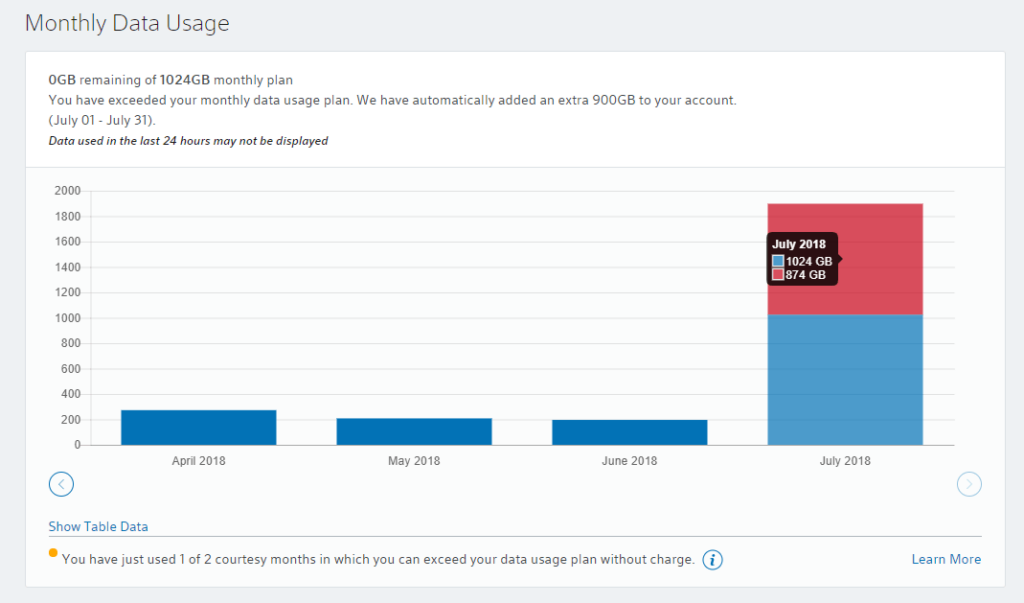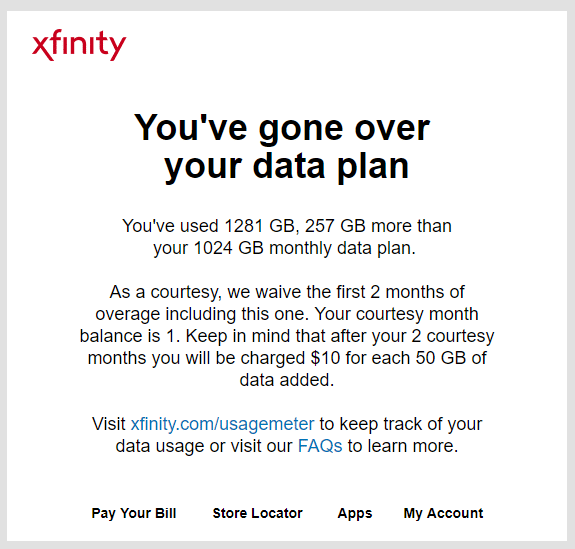It was a nasty surprise. That’s right! If your Internet data usage suddenly increases by ten times your average monthly usage, something is definitely wrong!
In this case, it was all about the Wi-Fi password or, more precisely, how you’re supposed to keep it secret.
Home Wi-Fi security breach, a true story
And that’s what happened to a friend of mine, John, not his real name. Just the other day, he got a call from Comcast saying he better curb his downloads, or soon he’ll have to pay $10 for every 50GB over the monthly allowance of 1024 GB.
The thing is, John hadn’t done anything out of the ordinary. Generally, his most heavy Internet usage is Netflix, but even if he had streamed 24/7, there was no way he could have used some 1900GB in just 13 days.
A full-HD Netflix stream uses about 3GB per hour. To put this in perspective, before, John’s average monthly data usage for years was less than 250GB.

Long story short, as it turned out, somebody living in the vicinity of his house had been tapping into his Wi-Fi. Since John’s broadband connection was fast, that person or person(s) was able to use up a considerable amount of data in a short time.
But it was John who was to blame. He’s been quite loose on security. He did have a strong Wi-Fi password, but he wrote it on a corner of a big whiteboard hung in his living room following an underscore line that reads “Wi-Fi Password:”
What’s more, he named his network “John the Cool”—anyone who’s been to his house or peeked through one of his glass windows could figure out how to use his Wi-Fi at will. And somebody did precisely that, probably for a while. That ain’t cool at all!
Here’s the thing: whoever did that could have done even more harm than just abusing John’s Internet connection. But that’s another story.

How to keep your Wi-Fi password safe
The lesson here is that you need to keep your Wi-Fi network safe and don’t assume that it’s secure. Take a moment right now and make sure. Here are a few things to consider:
- Name your Wi-Fi network something random that doesn’t relate to you. Don’t name it after yourself, your loved ones, or your home address. Since that Wi-Fi network name is broadcast in the air, it’s not a secret; everyone can find out what it is.
- Make a strong Wi-Fi password. You don’t want to make one that’s hard to type in on a small device (like a printer), but you do want something that’s not easy to guess. Generally, a long string of random numbers will do.
- Don’t give that password to anyone.
- When sharing Wi-Fi, it’s best to use a Guest network with limited access. Then, offer to enter the password on the device for your guest instead of saying it out loud.
- Don’t share your Wi-Fi with your neighbors (unless they share the Internet cost with you).
The happy ending
As for John, he didn’t have to pay the extra cost since it was his first time going over the data cap—Comast Xfinity gives you a couple of exceptions a year.
Most importantly, he learned and changed his password, which fixed the problem. However, he refused to rename his Wi-Fi network. “I want to send a message to whoever used my Internet that they are not welcome anymore!” And his whiteboard message remains the same.
Maybe the surprise is now reversed. John sure hopes so.



Great article Dong, great article.
Security is paramount, when dealing with the internet.
Let me ask you Dong, can the Wi-Fi router companies take it another step by NOT placing any information on the outside box? i.e., MAC address; Serial No;
I mean most people throw these boxes in the trash. Could a person contact a particular manufacturer with the above info and do some dastardly things with it, with the help of a unknowning manufacturer customer service representative?
That information is generally not printed on the box, David. Only on the device itself.
MAC address & serial has been printed on EVERY router box I have ever bought
More on that in this post about the MAC address, Joe.